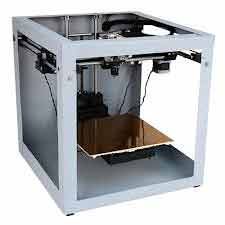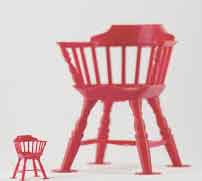
In Johannesburg
Services in Johannesburg
- Cholesterol and You
- Motivational Speaking
- Soweto
- Rubble Removal
- Bee Removals
- Furniture Removals
- Storage on East Rand
- Document Storage
- Photographers
- Photography
- Antiques
- Chocolate Fountain Hire
- Chimney Cleaning in Johannesburg
- Skip Hire
- Debt Wise
- Bookkeeping
- Don't get left in the dark
- World Class City
- 3D Printing
- Accounting
- The Sweet and Snack Expo
- Molex
- Women in Construction
- Vintage Style
- Hydraulics
- Security
- Industry
- Team Building
Products in Johannesburg
Life in Johannesburg
- Your Weekend
- Kyalami Kart Circuit
- Alive and Well in Johannesburg
- Belly-dancing
- Sparrow Village
- Randpark Ridge
- Soweto Tours
- Northcliff
- Ferndale
- Bee Story
- The Battle of the Service Providers
- Johannesburg - West and South
- Building in Johannesburg
- Parkhurst
The future is here
Article published on 27 October 2015
The wave of the future tooke a whole lot less time to arrive than one would have expected. The wave in question is that of 3D printing.
What started as a scientific and development program has evolved and has already had its phase in industry and now we are at a point where 3D printing has become a hobby or even a home industry for some. The possibilities, as it has become evident, are endless. All that one needs is a 3D printer, the correct filament and a bit of know how.
Printing for repairs
So many household products are imported, and if they malfunction it can take ages for a replacement part to arrive or for the item to be repaired. Luckily some manufacturers have seen the light and created links on their websites where you can download the specifications of a particular part, print it yourself and do your own repair. No more needing to wait, no huge bills for parts and import costs.
And your own designs
Designing something you wouldn't be able to buy at a shop and printing it for yopurself will not only make your product unique, you will be able to design it exactly to your own specifications.
And if you are an inventor or someone who designs and build things to make their everyday life a little easier you will probably need to print various brackets and joints the specs of which have been supplied on certain websites, making your design work a whole lot easier.
3D Printing, the wave of the future
Article published on 25 February 2014
3D printing is taking the world by storm and this is just the beginning.
At this stage the equipment is not really at the stage of development
where it can be bought and kept on a desk in your study. One would be
forgiven for feeling like you are on the Starship Enterprise and the captain
is beaming an object down for your use.
3D printing probably won't be a constant requirement in most jobs, but it may pop up occasionally, but instead of spending money on equipment that you won't be using regularly rathe let a reputable company print your 3D project for you.
We will be able to run a number of different scanning applications and programmes which allow us to scan and print your requirements with extreme accuracy.

How does the printer know what item you want printed?
There are various programs which can be used CAD (computer assisted drawing)
is one such program.
Certain companies that manufacture machine parts will have the specifications
or data on their website, this is then loaded into the 3D printer and
the information is used to print the object.
The other option is to make use of a 3D scanner to gather all the information on the item and then print the copy of it that way.
How long does the 3D printing process take?
Because of the accuracy required the time taken for printing an object of 14cm height will vary between 2 and 5 hours. Constant research and upgrading have already begun to shrink print times to a more acceptable level.
Are the objects being printed usable?

Initially objects being printed using a 3D printer were not completely
stable, as the experimental stage began with materials which were easy
to melt and shape but didn't harden sufficiently to be usable.
ABS Filament changed that. Objects are
now being printed are indeed usable in any number of situations.
In certain instance the companies are not using the 3D printer to print prototypes but rather an end user product, usually custom made and specific to a purpose.
The printing process and the equipment employed will differ based on the type of object being printed.
What does 3D printing get used for?
Uses in architecture – Architects are now able
to print scale models of buildings saving the cost and time of building
one manually.
Town planners now find themselves able to print a 3 dimensional layout
of a town, this will assist in making the planning and decision making
simpler.
Education – Practical, tangible examples printed
up to facilitate the learning process. This is an especially useful facility
when dealing with special needs children or children with learning disabilities.
Apprentice
tradesmen can experience a particular process for themselves and familiarise
themselves with it before they formally enter the workplace.
Medical – The medical field has benefited from 3D printing to a the extent where experimentation on medical devices and artificial organs have begun. A man had a mask to replace the damaged side of his face printed up and a South African man printed himself a prosthetic hand because he grew tired of waiting, he is now taking his printer and his idea into Africa where access to prosthetics is limited or non-existant.
Protoypes – Previously moulds would need to be manufactured and a solitary item in a new range would have to be built, all at a higher cost than a printed prototype. Manufacturers will save money and time becausea mould does not need to be created or and the printed object will serve as a sample. if it needs to be altered it can be done on a computer and reprinted immediately.
Hobbies – 3D printing is a benefit to most hobbyists, especially model builders and miniaturists who might need a small piece and are unable to buy one directly from the supplier or they might even need a bespoke piece. They will be able to design and print exactly what they want.
Quick repairs (hard plastic parts) – The dishwasher or washing machine need a new spare part but the cost of importing it is prohibitive, now you can down load the design from certain manufacture websites and print the working part yourself. No travelling from supplier to supplier, no haggling, negotiating or waiting.
Personalised items - Sometimes you use a gadget in the kitchen or elsewhere around the house and you think to yourself: 'Surely this would be easier if this thing had an extra handle' etc. With 3D printing you can design your own gadget to the specifications that suit you!
Having a 3D printer in your home would be wonderful but the expense and the skills require to install and maintain a 3D printer haven't yet been outweighed by being able to print an object occasionally. Rather have your object professionally printed and save.
About 3D printing
Where did 3D printing start?
For a man who believes that the whole premise of this technology is to foster creativity, Charles Hull has certainly proved his point.
After starting his experiments as far back as 1983 using a group of materials called photopolymers which are acrylic based, melt easily and set into solid forms just as easily, Charles Hull refers to this manner of printing, which uses UV light to aid in the process as “stereolithography”.
What made 3D printing what it is today?
It was picked up by a number of professions most notably medical and was soon followed by those involved in product development and hobbyists. It's one of those things that grab the imagination, leaving it open to a myriad of applications.
Initially the chemical process were inaccurate and factors like distortion and cooling processes had to be factored in. The materials used were also very brittle and broke easily. Nowadays tough plastics are used.
Changing product design and manufacturing were major factors behind this development, Charles Hull says he did not forsee the growth but the need for tangibility has definitely steered 3D printing into what it has become.
People are constantly pushing limits and it has been no different when it comes to 3D printing, the greatest surprise for it's creator is the way in which the medical fraternity have embraced 3D printing. China recently unveiled it's first 3D bio-printer.
Personal 3D printers are not yet a common sight but they will become more prevalent as the cost comes down and the printing times become quicker. At the moment the printers are limited in their scope and size when it comes to home/desktop 3D printing, most being limited to a 14cm cube.
Are there limits to what 3D printing can do?

Traditional limits would include the size of object, material being used and time constraints. Companies who are in development of 3D printing and it's applications are constantly pushing the limits of what 3D printing is capable of.
The time factor has already decreased significantly, an object printed with ABS filament which took 5hours to print can now be done in just over two hours. The time constraint is largely due to the accuracy required.
Where can I buy a 3D printer?
3D printers have finally become available on the general market, and not a moment too soon. If you are planning and using your 3D printer for smaller scale objects you should find what you need at one of the following suppliers. 3D printers which are freely available are usually limited in size. There are large scale 3D printers available but currently they are being used in industrial, engineering and even medical fields.
Rapid3d are situated in Pietermaritzburg, South Africa and will be able to do a one off 3dimensional print for you or provide you with your very own printer. Visit rapid3d here: http://www.rapid3d.co.za
CAD House will knock your socks off with their range of printers and programmes leaving you able to print just about anything. Check them out: http://www.cad-house.co.za/